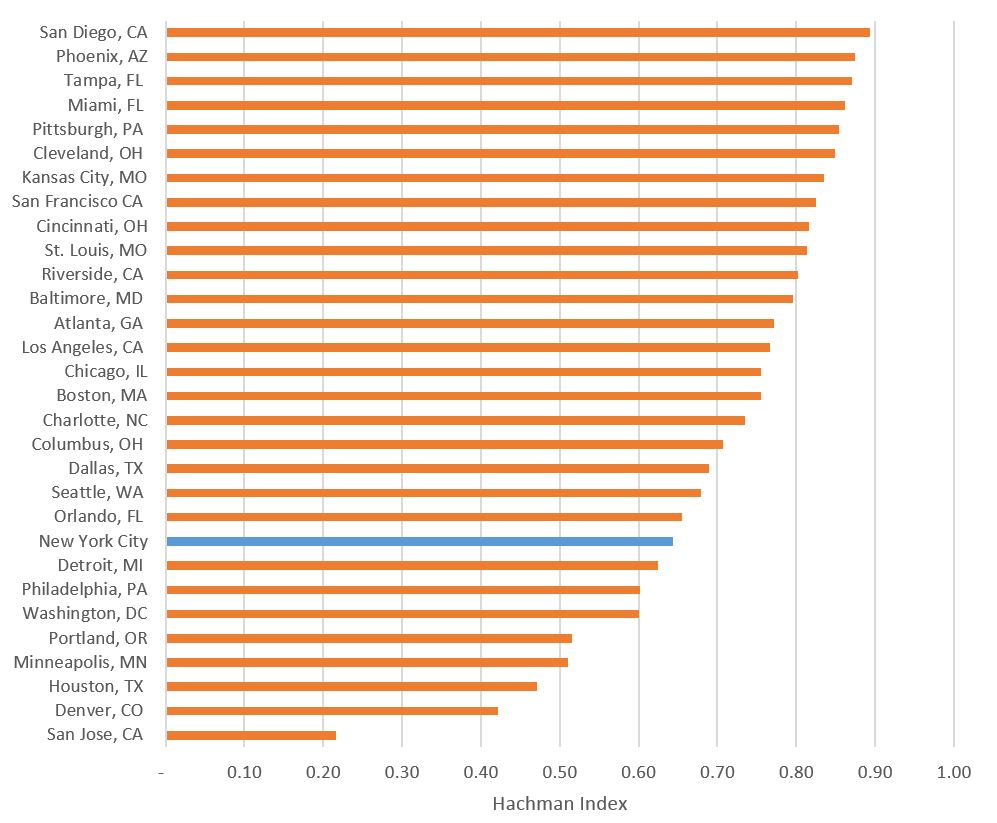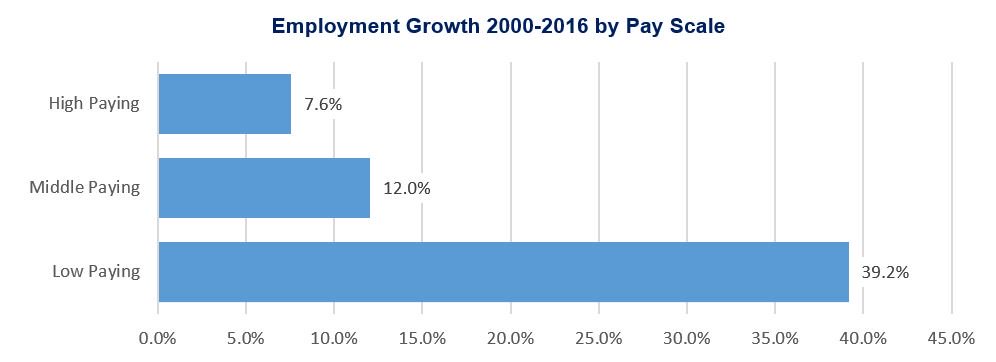Consent Decree Forces Croman to Pay $8 Million in Restitution to Tenants – Largest-Ever Monetary Settlement with an Individual Landlord
Over 100 Croman Properties will be Run by New Independent Management for 5 Years; Monitor will Oversee Compliance with Settlement and Report to AG for 7 Years – Longest-Ever Monitorship in a Tenant Harassment Case
Croman Currently Serving a Year in Jail, Paid $5 Million Settlement for Separate Criminal Charges Brought by AG Schneiderman
New York Attorney General Eric T. Schneiderman announced an unprecedented settlement with Steven Croman, a major New York City landlord, for engaging in illegal conduct, including harassment, coercion, and fraud, to force rent-regulated tenants out of their apartments and convert their apartments into highly profitable market-rate units.
The consent decree requires Croman to pay $8 million into a Tenant Restitution Fund – the largest-ever monetary settlement with an individual landlord. The settlement also requires over 100 Croman residential properties to be run by a new, independent management company with no ties to Croman, for five years – the longest-ever term for independent management in OAG history. Moreover, the settlement requires seven years of a monitor who will oversee compliance with the terms of the consent decree and provide regular reporting to the Attorney General – the longest-ever monitorship required in any tenant harassment case.
Croman is currently serving one year in jail and paid a separate $5 million settlement as a result of criminal charges brought by Attorney General Schneiderman.
“Over and over again, Steven Croman acted as though he was above the law, putting profits before his tenants’ safety and wellbeing. Earlier this year, we put Mr. Croman in jail for an elaborate scheme that was intended to push out rent-regulated tenants. And today, we’re ensuring tenants get the restitution and protections they deserve – including the largest-ever settlement with an individual landlord, and unprecedented independent management and monitoring at his properties,” said Attorney General Schneiderman. “New Yorkers are already struggling with high rents. We have zero tolerance for those who try to boost their bottom line by disregarding the welfare of their tenants. My office will continue to ensure that all landlords play by the rules, and aggressively pursue anyone who doesn’t to the fullest extent of the law.”
Eligible tenants will be able to apply for restitution; the Office of the Attorney General (OAG) will announce details of a claims process early next year. Tenants will be eligible for restitution if they are or were a tenant in a rent-stabilized or rent-controlled apartment owned by Croman between July 1, 2011 and the date of the agreement (December 20, 2017); they received a buyout of less than $20,000, not including any amount that purported to cover rent or arrears; and no other tenant in their apartment received money from the restitution fund.
The Attorney General’s office will approve both the independent management company and the monitor. The independent management company will oversee operations and institute new policies at the Croman properties to ensure full compliance with the law and correction of all past violations. It will also post a comprehensive set of Tenants Rights in every building it manages. The monitor will provide quarterly reports to the Attorney General, which will include at minimum any complaints received from tenants and actions taken; the total number of rent-regulated apartments that became deregulated during the reporting period, the reason for deregulation, and all supporting documents; and the monitor’s assessment as to whether Croman has complied with the consent decree.
The consent decree also ensures that Anthony Falconite – another defendant in the Attorney General’s lawsuit whom Croman allegedly referred to as his “secret weapon” in intimidating rent-regulated tenants – will have no interaction with any Croman tenants.
In addition to the $8 million Tenant Restitution Fund, Croman is responsible for covering the costs of the management company and monitor, as well as any outstanding government fines.
In May 2016, Attorney General Schneiderman filed a civil lawsuit against Croman and Falconite for allegedly engaging in illegal, fraudulent, and deceptive conduct in connection with Croman’s real-estate business. The lawsuit alleged that Croman directed an illegal operation that wielded harassment, coercion, and fraud to force rent-regulated tenants out of their apartments and convert their apartments into highly profitable market-rate units. The lawsuit further alleged that Croman deployed Falconite, a former New York City police officer, to frighten and intimidate rent-regulated tenants into surrendering their apartments.
The civil lawsuit, which was the product of an independent investigation, alleged that Croman used the following illegal tactics to push working-class and low-income tenants out of their homes:
- Harassing tenants into surrendering their apartments—and their rights under the rent-stabilization laws—in exchange for “buyouts,” which are often no more than a few thousand dollars or a few months of free rent.
- Incentivizing his employees and agents to obtain buyouts, at the expense of their other responsibilities. Employees allegedly referred to rent-regulated tenants as “targets” and competed with each other to obtain the most buyouts. In one characteristic exchange, Falconite allegedly wrote to a property manager that obtaining buyouts was a “team sport,” to which the property manager responded, “I know that!! Who’s our next target? We have to start lining them up!!!”
- Pressuring tenants into surrendering their apartments by repeatedly filing baseless lawsuits against them. In internal emails, company employees acknowledged that such lawsuits would “aggravate” tenants or pressure them to accept buyouts. In some cases, Croman’s employees allegedly created a false record for litigation by refusing to acknowledge receipt of tenants’ rent checks and then suing them for unpaid rent—a deliberate fraud upon the court.
The lawsuit also alleged that Falconite, whom Croman referred to as his “secret weapon,” used deceptive and frightening tactics to intimidate rent-regulated tenants, including using false pretenses to gain access to tenants’ apartments, often posing as a repairman or building manager.
In addition, the lawsuit alleged that Croman, in his rush to flip vacant rent-regulated apartments into high-rent units, presided over a disturbing pattern of illegal and hazardous construction. The lawsuit alleged numerous examples of illegal construction, including the following:
- On at least 175 occasions, Croman’s companies allegedly performed construction without obtaining permits.
- Croman allegedly regularly directed his employees to flout stop-work orders and conceal unlawful construction from Department of Building inspectors.
- Croman allegedly filed false documents with the Department of Buildings on dozens of occasions in an attempt to avoid stricter oversight of his construction projects and elude tenant protection measures.
- Croman and his companies allegedly violated lead-safety laws repeatedly, exposing numerous tenants to lead-contaminated dust. On more than 20 occasions, the Department of Health (DOH) found impermissibly high levels of lead dust in Croman’s buildings, including levels up to 65 times the legal threshold.
- Croman allegedly defied DOH orders to address the lead hazards. On one occasion, after DOH ordered Croman to stop all work and begin lead-abatement measures, Croman directed his property manager to postpone the lead abatement so that the construction could continue.
- Croman’s alleged illegal construction had devastating consequences for tenants. As alleged in the lawsuit, DOH identified lead-dust hazards in the apartment of a tenant who cared for her young grandsons, ages three and nine, both of whom were disabled. The tenant had to move her grandsons out of the apartment because of the dangers posed by the construction and lead dust and was forced to sue Croman to obtain repairs.
In addition, Croman allegedly repeatedly defied court orders to make repairs and address intolerable living conditions. The lawsuit alleged that throughout his portfolio, Croman had been issued hundreds of “hazardous” and “immediately hazardous” violations, which he had failed to correct. The suit further alleged that, on six occasions, the city has sued Croman’s companies for falsely certifying that they corrected violations on his properties.
In October, Croman was sentenced to a year in jail and paid a $5 million tax settlement following separate criminal charges brought by Attorney General Schneiderman for fraudulent refinancing of loans and tax fraud. Rarely, if ever, has a landlord been sentenced to serve time in jail for engaging in these practices.
Earlier this year, the Attorney General Schneiderman formally introduced new legislation aimed at holding the city’s most unscrupulous landlords criminally accountable for Harassment of a Rent Regulated Tenant. Current state law demands prosecutors reach an inexplicably high bar in order to criminally charge landlords with that crime—which is why in the past twenty years, not a single landlord has ever been convicted of the crime of Harassment of a Rent Regulated Tenant.
The Attorney General’s legislation would set a more reasonable standard that removes the need to prove physical injury to a tenant, and opens the door to Harassment of a Rent Regulated Tenant prosecutions arising out of more commonplace and insidious tactics, such as turning off heat and hot water, exposing young children to lead dust, and making rent-stabilized buildings deliberately uninhabitable for current tenants and their families.
The Attorney General has taken a number of other steps to combat tenant harassment and illegal practices by landlords across New York City, including:
- Enhancing and streamlining the office’s resources to combat tenant harassment, deceptive lending practices, deed theft, bank fraud, and other housing issues facing constituents.
- Filing additional felony charges against a landlord for committing mortgage fraud.
- Forming the Tenant Harassment Prevention Task Force with city and state officials.
The Attorney General would like to thank the NYC Department of Buildings, NYC Department of Housing Preservation and Development, NYC Department of Health, and NY State Homes and Community Renewal for vital assistance in this case.



